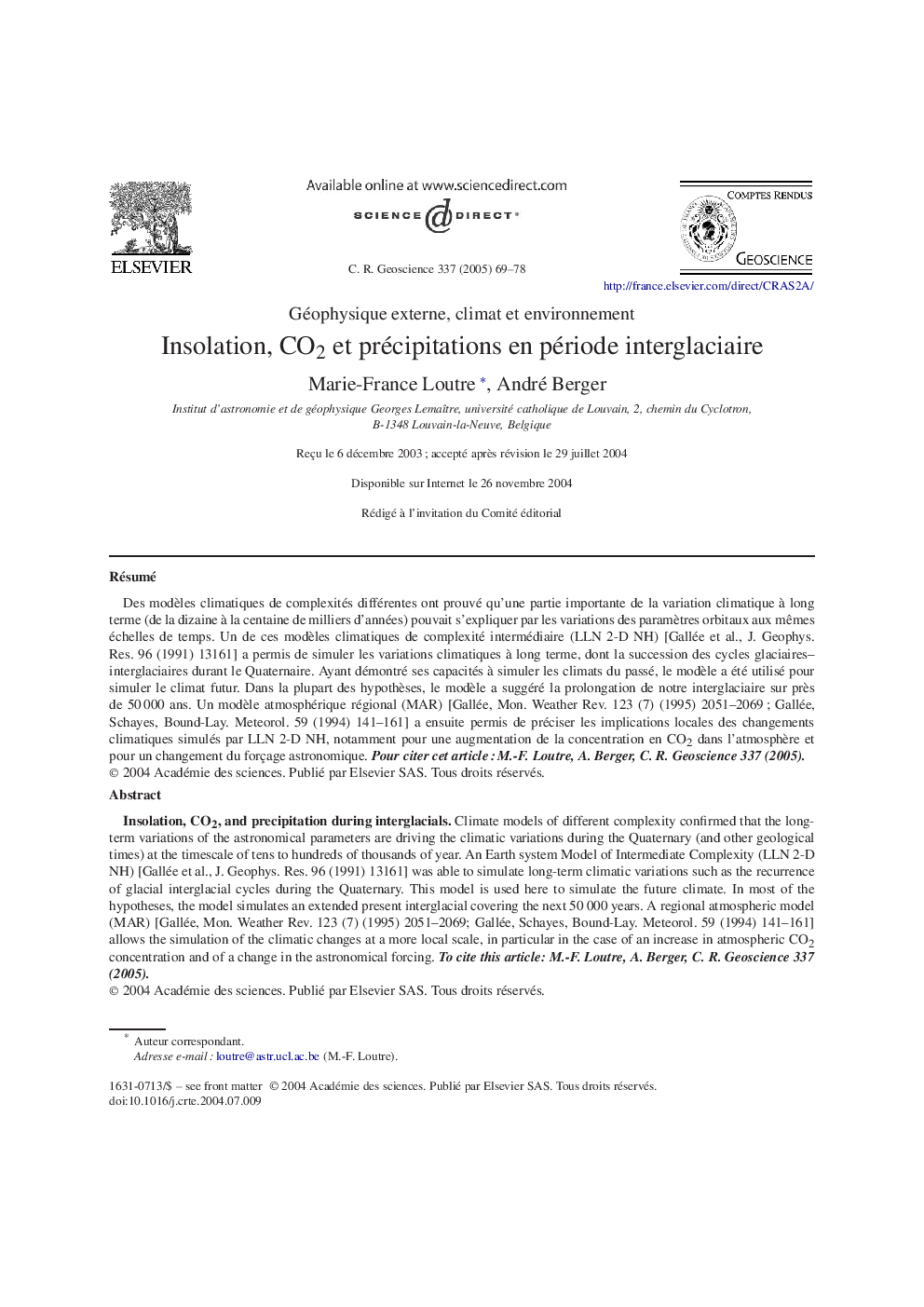| Article ID | Journal | Published Year | Pages | File Type |
|---|---|---|---|---|
| 9461744 | Comptes Rendus Geoscience | 2005 | 10 Pages |
Abstract
Climate models of different complexity confirmed that the long-term variations of the astronomical parameters are driving the climatic variations during the Quaternary (and other geological times) at the timescale of tens to hundreds of thousands of year. An Earth system Model of Intermediate Complexity (LLN 2-D NH) [Gallée et al., J. Geophys. Res. 96 (1991) 13161] was able to simulate long-term climatic variations such as the recurrence of glacial interglacial cycles during the Quaternary. This model is used here to simulate the future climate. In most of the hypotheses, the model simulates an extended present interglacial covering the next 50 000 years. A regional atmospheric model (MAR) [Gallée, Mon. Weather Rev. 123 (7) (1995) 2051-2069; Gallée, Schayes, Bound-Lay. Meteorol. 59 (1994) 141-161] allows the simulation of the climatic changes at a more local scale, in particular in the case of an increase in atmospheric CO2 concentration and of a change in the astronomical forcing. To cite this article: M.-F. Loutre, A. Berger, C. R. Geoscience 337 (2005).
Related Topics
Physical Sciences and Engineering
Earth and Planetary Sciences
Earth and Planetary Sciences (General)
Authors
Marie-France Loutre, André Berger,
